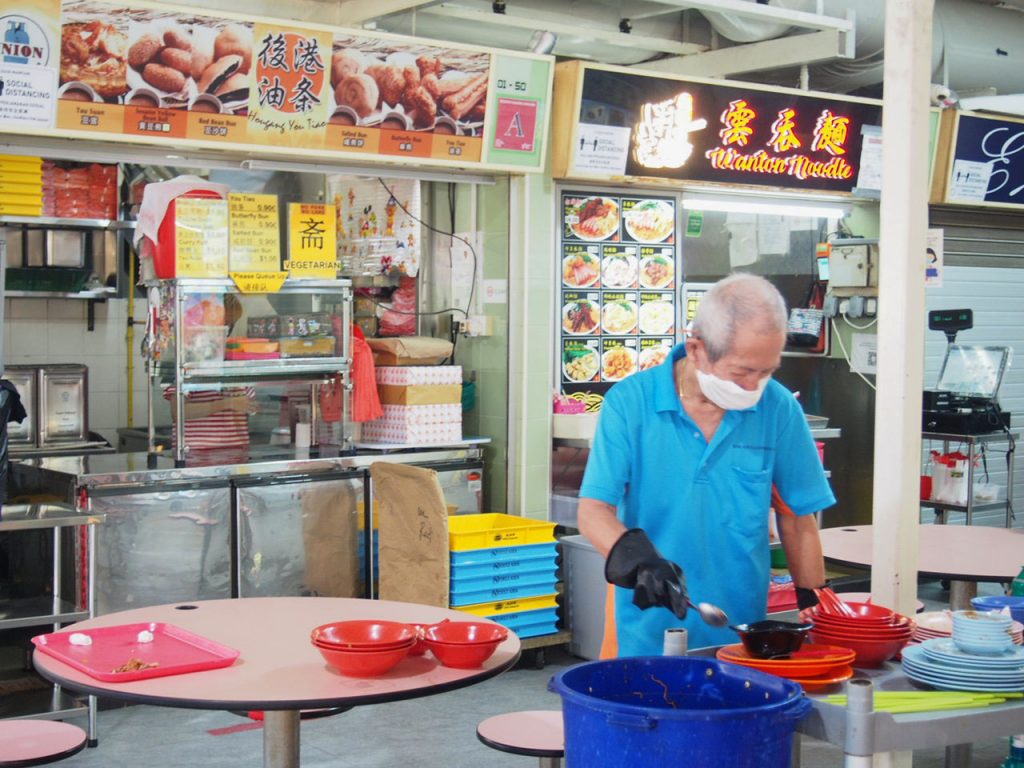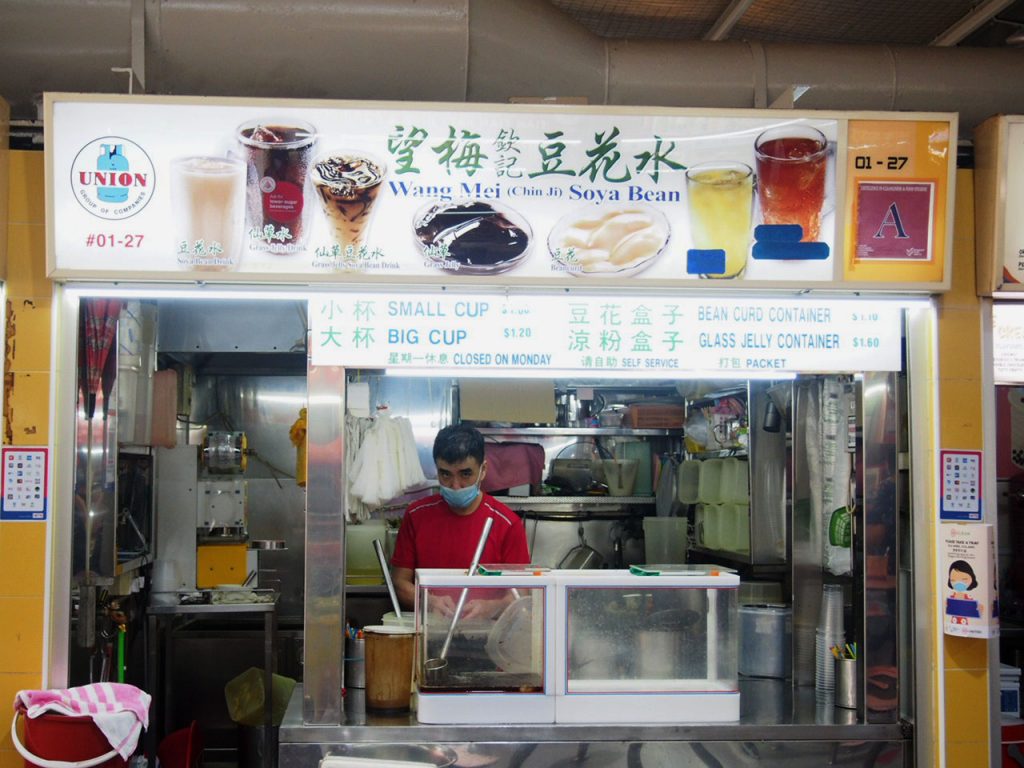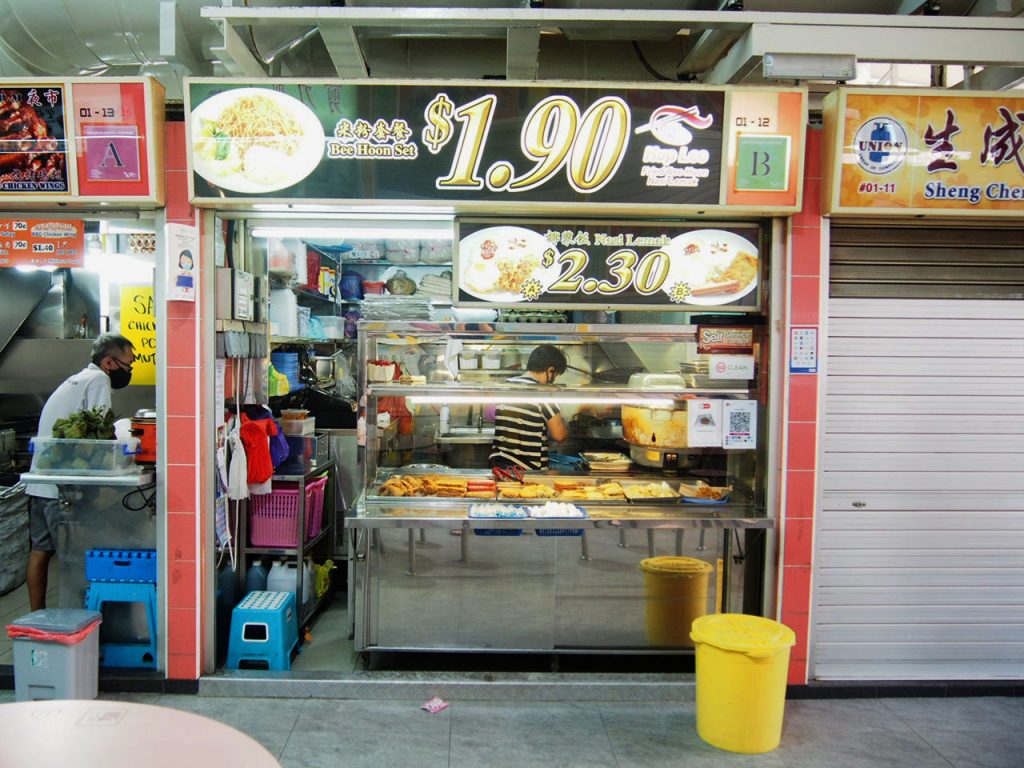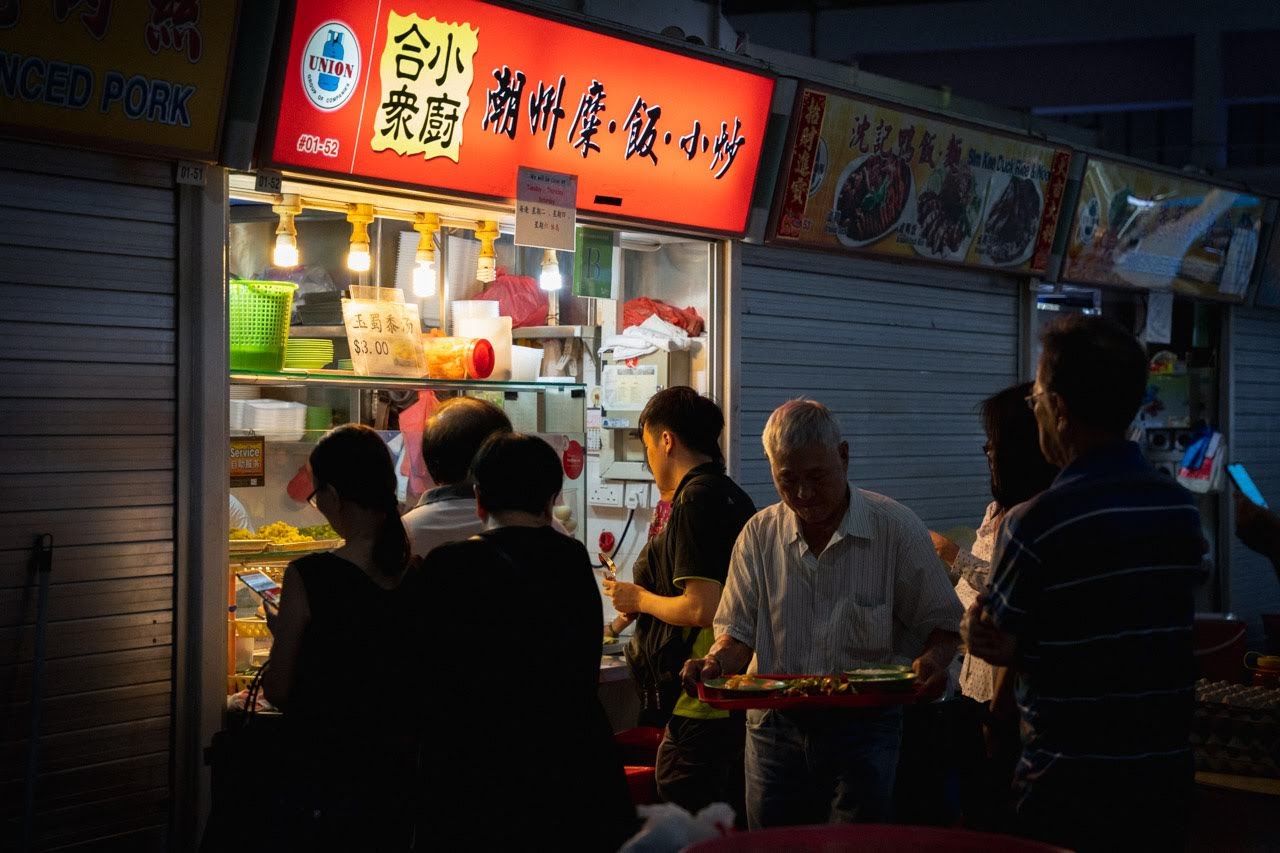While most pay cash, every so often, someone brings their phone to the SGQR poster plastered next to the counter, squints really really hard, and pays using Paylah or some other e-payment system. Occasionally, an elderly customer will try their luck with e-payment, fumbling with their phone for what feels like hours before giving up and resorting to cold, hard cash.
All the while, Mrs Ng looks on patiently, a flicker of annoyance barely visible beneath her mask.
Tian Tian Fatt is just one example of how Singapore is transitioning to cashless payment.

Tian Tian Fatt’s adoption of cashless payment is just one small part of the government’s nationwide plan to digitalise Singapore.
Over the past few years, cashless payments have weaved themselves into our lives. Paylah is almost a basic necessity at this point—it’s essential when going Dutch, since you can pay someone without fumbling for elusive five dollar bills and ten cent coins. You can even pay for the bus or MRT by tapping your phone on the EZ-Link card reader.
But, as fast as we are digitalising different aspects of our daily lives, places like hawker centres and coffee shops have remained largely cash-dependent.
The government knows this. Since June 2019, they have been rolling out an initiative to implement a unified e-payment system in coffee shops, hawker centres, and industrial canteens. Ambassadors from Nets went around different hawker stalls, like Mrs Ng’s, and tried to persuade them to adopt cashless payment.
Covid-19 has only accelerated this process of digitalisation.
In the midst of the pandemic, IMDA launched the “Hawkers Go Digital” initiative. Digital Ambassadors were deployed to encourage stallowners to join the e-payment programme. The new financial incentives are pretty attractive too: stallowners who adopt e-payment by the end of this year, including those who have previously signed up for the scheme, will receive a bonus of up to $1,500.
However, despite all these efforts, have hawkers truly embraced the digital transformation of their businesses? Is it really possible to completely transform our hawker industry into a digital one?
For Mrs Ng, she finds that the biggest hurdle is in checking for successful transactions.
After scanning the QR code and making the transaction, customers have to show her the screenshot as proof that the payment has gone through. But, during peak hours, they are just too busy to ensure that everyone has paid the correct amount.
“I don’t even use e-payment myself,” she admits.

Mr Xu, who runs Hoe Heng Porridge and Lor Mee, says the same.
He’s already been using e-payment for two years, but he finds that older folks struggle with it a lot. Even if the app is already downloaded, both he and his elderly customers are afraid that they will press the wrong button or key in the wrong amount.
Imagine accidentally paying $380 instead of $3.80—if you’re barely familiar with even WhatsApp, dealing with a slip-up like this would be a nightmare.
“For old people, it’s troublesome,” Mr Xu explains, as he picks at his afternoon tea of fried fish. “The best is still cash.”
Seng Kwong Coffee Stall’s owners, Mr and Mrs Thiong, were initially doubtful about using e-payments.
Already in their 70s, having to adopt a completely new and foreign method of payment is a “hassle”. When her QR reader app stopped working, Mrs Thiong even needed help from others to reinstall the app, because she wasn’t familiar nor confident with using a smartphone.
The introduction of financial incentives was what convinced them to utilise e-payment, even if only for a while.
They are still in the process of setting up the e-payment system, but Mrs Thiong is worried that having to check for successful transactions will delay the preparation of orders.
But it’s not just elderly hawkers who are cautious about adopting e-payment.
Mrs Ng, for one, is only in her early 50s and uses a smartphone with ease, yet isn’t willing to embrace e-payments. Mr Loh, who runs Jin Fu Hainanese Chicken Rice, is only in his 40s, and is similarly lukewarm about this whole e-payment thing.
“I’ve only just applied for the programme,” he says. The Nets ambassadors had come by last year, but he didn’t take up the scheme then because it was too much trouble. This time round, when the Digital Ambassadors visited again, armed with the IMDA’s financial incentives, he agreed.
When I ask whether he would consider signing up for delivery services—something I’d assumed would be a natural next step in the digitalisation process—he gives a resolute “no”.
“You look at this, I do everything alone,” he says. Indeed, Jin Fu is a one-man show, and he does everything from the cooking to cashiering to cleaning. “Unless my business is very good, it’s too much of a hassle to do this by myself.”

It’s made even more difficult by the fact that many stall-owners and customers are not comfortable with technology. Even if they are familiar with technology or open to learning it, pragmatic issues like taking 0.5 seconds out to check for successful transactions are a concern.
The fact that the government has had to officially roll out “Hawkers Go Digital”, on top of last year’s scheme by Nets, is a testament to how much work this will take.

Ideally, they will stick with the e-payment system even after the incentive period is over, but the alleged convenience of cashless payments might not lead to the future we were promised.
In fact, a 100% digital hawker industry would require more time and patience than anything else.
And for this to happen, a holistic approach is needed, especially one that is grounded in users’ needs—in this case, the needs of hawkers.
Many hawkers are in their 60s or 70s. E-payment apps, at least those targeted at hawker centres, must be made more user-friendly for the elderly. Small changes like having larger icons and using simpler gestures that require less complex movements can go a long way. Other possibilities include incorporating non-English languages, or even incorporating voice control, to cater to less literate demographics.
Furthermore, hawkers are often incredibly busy, especially during peak hours. Anything that might disrupt their workflow, like having to occasionally check for successful transactions, isn’t exactly something they would take on with much enthusiasm. App designers need to figure out how to incorporate technology into the workflow in a natural, intuitive manner.
If we truly want to go digital, then we need to take small intricacies like these into account.
As it is, even if hawkers are willing to adopt e-payment, various obstacles make it almost impossible for this transition to be a seamless one.
For now, perhaps the best solution would be to encourage e-payment, giving resistant hawkers a gentle nudge—lightly persuading them, incentivising them, with just enough force—but still leave enough space for both cashless and cash options. Ambassadors can also be deployed on the ground, at hawker centres, to help with technical issues that elderly hawkers and customers might encounter, so as to make this transition smoother.
But when we digitalise even further, we will have to consider how to uplift those who weren’t able to catch up, who might have lost out, and help them in a way that caters to their needs and abilities.
As important as it is to digitalise, it’s even more important to do so in a way that is inclusive and empathetic.
Still fumbling with PayLah, GrabPay, and all the other e-payment apps? Tell us more at community@ricemedia.co.





